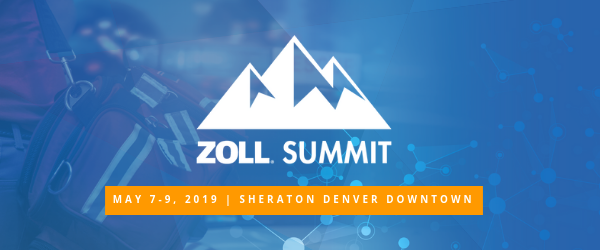Improving EMS Documentation Outcomes
ZOLL SUMMIT Speaker Series Think of the phrase “EMS documentation
Was this information valuable?

ZOLL SUMMIT Speaker Series
Think of the phrase “EMS documentation.” What comes to mind?
Do you see a completed piece of paper, maybe a printed ePCR? Do you imagine someone typing or selecting check boxes? Do you see someone talking with a patient and making notes?
Numerous articles and blog posts stress the importance of accurate and complete narrative writing. You’ve most likely told personnel, “If you didn’t write it down, you didn’t do it,” or “Bad data in, bad data out.” You also most likely know firsthand the consequences of poor documentation.
Despite its importance, articles and blog posts stress the same points, becoming a broken record: documentation needs to be accurate, thorough, correct, and clear. One reason why articles continue to repeat these same conclusions is that narrative writing in EMS is understudied and as such, not as well understood as it could—and arguably should—be.
A new approach to how we understand documentation
I’m an EMS writing researcher and specialist, a career path that stems from my own EMT-B training. Over the past decade, I’ve worked as a writing researcher with a handful of EMS units, and I hear the same thing: “Our personnel struggle with documentation. They tell us too much or not enough. We need to improve our documentation.”
Coupling this research with writing studies scholarship, I’ve come to see EMS writing as a complex, cognitively demanding process that results in a product: the ePCR. This product, then, helps people act. For example, insurance companies determine coverage and reimbursement, quality assurance specialists ensure compliance, lawyers litigate lawsuits, and healthcare providers continue patient care.
In any field, including EMS, “writing carries a heavy burden” because it “serve[s] as a vehicle through which knowledge is both generated and demonstrated” (Adler-Kassner & Wardle, 2015, p. 6). EMS providers “generate” their knowledge through writing a narrative and completing an ePCR, and their appropriate treatment decisions and actions are demonstrated through the completed ePCR.
Writing is a complex, cognitively demanding process
Seen this way, writing is more than typing a narrative and checking boxes in an ePCR. Writing in EMS involves multiple interrelated actions:
- Gathering information through observing and speaking, determining which pieces of information are pertinent, pertinent negatives, or not pertinent.
- Remembering the information.
- Determining appropriate medical interventions and treatment.
- Deciding to follow or deviate from protocol.
- Remembering the effects of these interventions and acting accordingly.
- Communicating by speaking to patients, other providers, family members, dispatch, receiving hospital staff, and other appropriate providers.
- Taking notes if it is appropriate and feasible, and then…
- Synthesizing and entering the information into an ePCR form and
The last action, “synthesizing and entering,” involves three related steps:
- Determining which pieces of information are important to document,
- Recalling the information, and
- Crafting a persuasive data-based narrative for a variety of audiences, ensuring that relevant details and pertinent negatives are included.
Often, writing is seen as that final bullet point—the act of producing an effective product. But an effective product relies on an effective, honed process that includes the actions listed above.

As the saying goes: bad information in, bad information out.
Writing researchers and educators know that writing takes years to develop. Just like physical exercise, the more writers write, the more they improve. If the writing process isn’t honed, refined, and practiced, the writing product suffers.
Programs spend on documentation due to various constraints, including the amount of content they need to cover. In my own training and in my research sites, programs spent about an hour teaching documentation models (SOAP and CHART). These programs returned to documentation during audit and reviews and continuing education, but because they needed to cover other material, documentation instruction was limited. Sometimes the refresher was a reminder that “if you didn’t write it down, you didn’t do it.”
This model is like expecting to have a body builder’s body after a three-hour meeting with a personal trainer and one-hour follow-up training sessions per year. It’s not that easy.
Adding to time constraints and content requirements, EMS educators aren’t often taught how to teach writing. We tend to teach what we know unless we are taught otherwise, thus continuing the cycle. In my research with EMS programs, participants shared that “time and experience” are the best ways to learn how to document well. Although that’s partly true, explicit writing instruction adds much value to time and experience.
Without a refined, committed process to the teaching and the process of writing, the product suffers—bad data in, bad data out.
![]()
How can we ease writing’s heavy burden?
Training programs can discuss narrative writing in new ways.
The current models of SOAP, CHART, and “paint a picture, tell a story” don’t fully tend to the underlying cognitive work involved in EMS writing as outlined above. Models are powerful cognitive frameworks that influence how writers approach a writing task. They can hinder or help the writing process and product. A change in model can ease some of writing’s burden.
In my presentation at ZOLL SUMMIT 2019, I’ll discuss an alternative to these models. The model is based on a scientific report model that stresses replication and results—that is, it stresses including relevant data so that other people can act. Participants will receive handouts they can use in training courses.
Want to know more? Register for Elizabeth’s SUMMIT session: “Improving Documentation Outcomes by Building a Data-driven Argument.”
Related Posts
ZOLL Pulse Blog
Subscribe to our blog and receive quality content that makes your job as an EMS & fire, hospital, or AR professional easier.
ZOLL Pulse Blog
Subscribe to our blog and receive quality content that makes your job as an EMS, fire, hospital, or AR professional easier.



